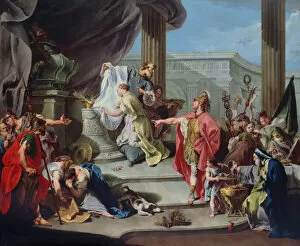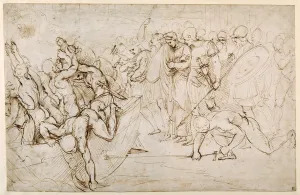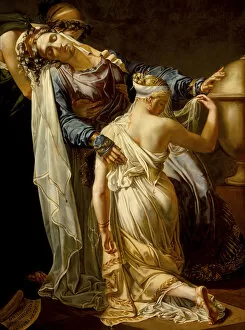Neoptolemus Collection
Neoptolemus, the valiant warrior of ancient Greece, is depicted in various artistic masterpieces
All Professionally Made to Order for Quick Shipping
Neoptolemus, the valiant warrior of ancient Greece, is depicted in various artistic masterpieces. In a striking red-figure pottery Krater from Civita Castellana, we witness Neoptolemus taking Andromache into captivity after the fall of Troy. The intensity of this moment is further captured in Jean Racine's play "Andromaque, " where Pyrrhus wears an elaborate costume to portray Neoptolemus. The tragic events surrounding Neoptolemus continue to unfold in Pierre Lombart's painting "The Sack of Troy-Pyrrhus Killing Priam. " Here, we see the aftermath of war as Neoptolemus mercilessly ends King Priam's life. This scene echoes another artwork by Giovan Battista Pittoni titled "The Sacrifice of Polyxena, " which depicts the heart-wrenching sacrifice made by Polyxena. Merry-Joseph Blondel portrays Hecuba and Polyxena mourning their fate in his piece created after 1814. Their grief resonates with viewers as they contemplate the consequences brought upon them by Neoptolemus' actions. However, not all depictions focus solely on his brutality. In Lachmann's painting "The Repentance of Neoptolemus, " we witness a different side to him - one filled with remorse and regret for his past deeds. This portrayal offers a glimpse into the complex nature of this legendary figure. Throughout these artworks, it becomes evident that Neoptolemus' story has captivated artists across centuries. From Homers Odyssey engravings to illustrations from Racine's play "Andromaque, " his character continues to inspire creative minds worldwide. Intriguing and multifaceted, Neoptolemus stands as a testament to humanity's capacity for both heroism and cruelty—a reminder that even great warriors are not immune to inner turmoil and redemption-seeking journeys.













